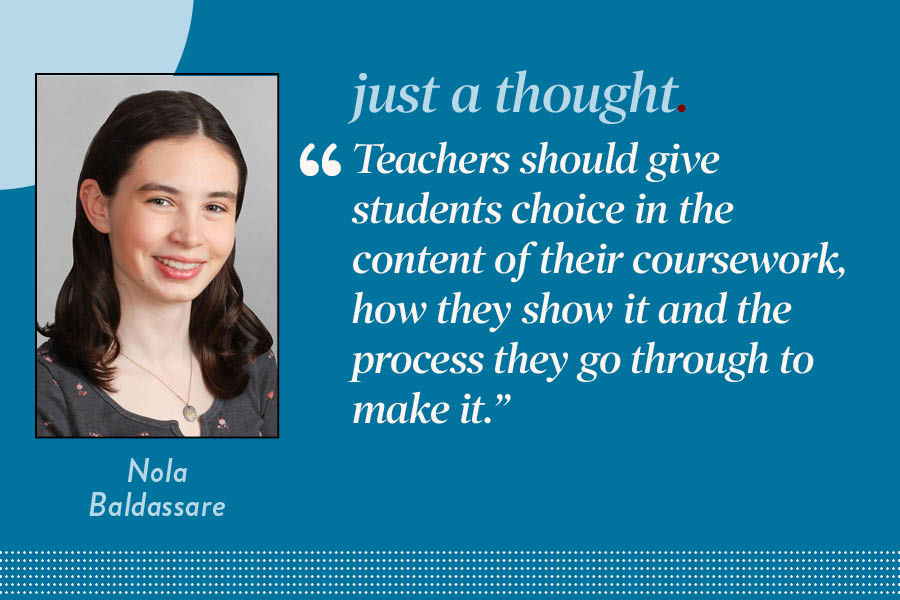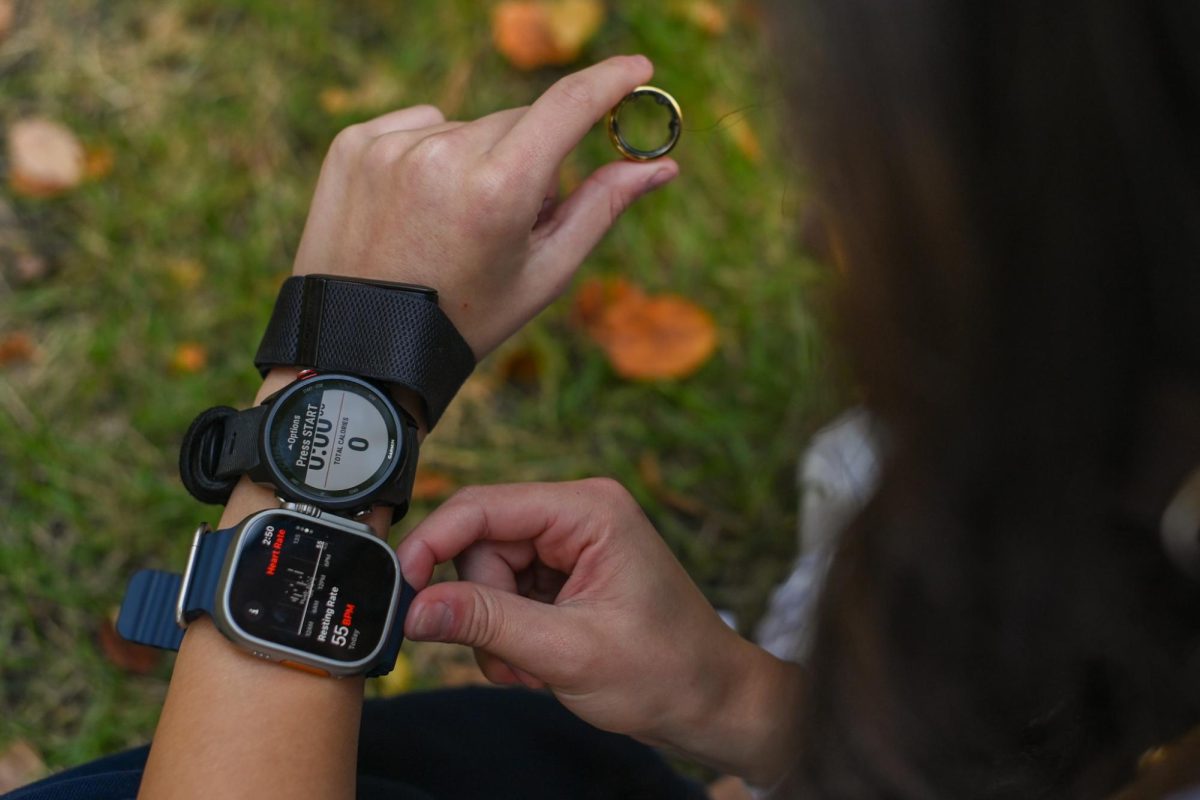160, 150, 140, 130, 110. Sophomore Taara Sajdeh watches her Garmin watch display her heart rate after her run.
Gone are the days of pedometers strapped to your waist, and in are the days of rings that analyze your every movement. Modern wearable fitness technology items — rings, watches, patches, straps, sleep trackers — have become an integral part of many students’ and athletes’ lives.
“I think without my watch I wouldn’t have as accurate of a read as I do about where my fitness is,” Taara said. “The tracking helps me categorize the types of runs and how they impact my body.”
Taara isn’t alone. Over the past two years, wearable fitness technologies have changed a person’s fitness planning from putting in more effort to now analyzing hundreds of data points to optimize a training schedule.
Taara’s watch provides more than just time and distance. She said her Garmin Forerunner 245 is essential to her training, helping her know when she is overtraining or when she needs to get more rest. While she mainly uses her watch for logging runs and keeping track of time, it also tracks her stress and blood oxygen levels, and provides workout reviews, almost acting as a coach on her wrist.
Over the past four years, companies have pushed to create smaller devices, such as the Oura Ring, weighing as little as 5 grams. The Whoop Strap and Oura Ring emphasize minimalism, eliminating many features that once dominated the scene such as screens and buttons. These companies are moving toward creating a product that doesn’t interfere with your life through constant notifications.
Whoop’s website states, “A minimalist, screen-free design means you can wear it 24/7.”
Most students don’t know the amount or quality of sleep they get, but junior Grover Henderson gets sleep data from the thin strap he wears around his wrist, allowing him to adapt his schedule to prioritize sleep.
“It just motivates me to go to sleep every day because you don’t really know how much sleep you’re getting until you start tracking it,” Grover said.
For 10 years, rings that track the wearer’s health have been a huge talk in the technology industry, but Oura is the first company to have a successful, reliable product that has become popular, bringing a completely different realm. According to Forbes, Oura has sold more than 2.5 million rings in its 11-year history.
For science teacher Elizabeth Hubin, the Oura ring has helped her improve her life through “gamifying” it. The statistics are no longer just numbers on a screen but instead a lifestyle that helps her proactively change habits such as sleeping and eating.
“I’ve really enjoyed using the Oura Ring to especially monitor my sleep, and daily activities,” Dr. Hubin said. “The Oura ring app is the first thing I look up when I wake up, and I see how much REM sleep I have gotten, how deep sleep, and it gives you a daily score.”
The idea of scoring your day also helps users motivate themselves toward working harder. The simple dopamine release from seeing a streak go up or a score go up causes users to keep the good habits and further improve them.
“It almost gamifies it by giving you a sleep score and a daily score,” Dr. Hubin said. “It’s kind of silly, but it definitely gives me a little more drive to go to bed a little earlier or change other habits.”






















































